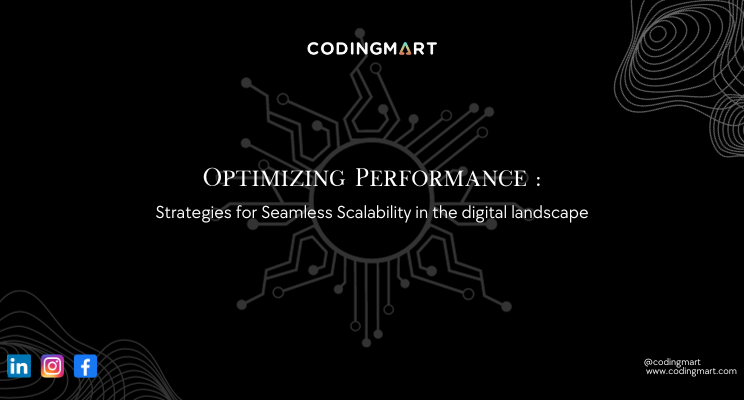blogs
Navigating Software Architecture

In today’s fast-paced digital landscape, the choice of software architecture can make or break a business. It’s the foundational decision that impacts development speed, scalability, resilience, and ultimately, your ability to meet customer demands.
Imagine standing at a crossroads, with two distinct paths before you. On one side, you have the time-tested and familiar Monolithic Architecture – a single, cohesive unit. On the other side, there’s the agile and dynamic Microservices Architecture – small, independent services working in harmony. Each path has its allure, but which one is the right fit for your business?
In this in-depth exploration, we embark on a journey to compare and contrast Monolithic and Microservices Architectures. We’ll dissect their structures, scalability, deployment strategies, and how they shape development teams. But we won’t stop there; we’ll also delve into resource utilization, technology diversity, development speed, legacy system integration, data management, and cost implications.
So, whether you’re an entrepreneur launching a startup, an IT leader steering an enterprise, or a developer curious about the ever-evolving software landscape, this newsletter will serve as your guide. Let’s dive into the world of software architecture to discover which path aligns best with your business needs and future aspirations.
Understanding Monolithic Architecture :
A monolithic architecture is a traditional approach to software development. Monolithic architecture is an architectural pattern of designing and developing a complete application as a single unit. For example, a traditional application will have a frontend, API, services, load balancer, and database. If you build everything together and deploy it on the server, that’s called a monolithic architecture, where services tightly couple together.
The word “monolith” is often attributed to something large and glacial, which isn’t far from the truth of a monolith architecture for software design. A monolithic architecture is a singular, large computing network with one code base that couples all of the business concerns together. To make changes in this kind of application requires updating the entire stack by accessing the code base and building and deploying an updated version of the service-side interface. This makes updates restrictive and time-consuming.
Exploring Microservices Architecture :
Microservices are an architectural approach to building and deploying software applications that involves breaking down an application into smaller, independent services that can be developed, deployed, and maintained separately. While there are many benefits to using microservices, there are also some challenges that need to be considered.
These services have their business logic and database with a specific goal. Updating, testing, deployment, and scaling occur within each service. Microservices decouple major business, domain-specific concerns into separate, independent code bases. Microservices don’t reduce complexity, but they make any complexity visible and more manageable by separating tasks into smaller processes that function independently of each other and contribute to the overall whole.
Comparing Architectures from Different Perspectives :
1. Application Architecture Comparison : Monoliths offer a simple, undivided structure, while Microservices exhibit complexity, consisting of diverse services and databases.
2. Scalability Comparison : Monolithic applications scale as a single unit, whereas Microservices enable uneven scaling, saving time and resources. This flexibility encourages businesses to migrate to Microservices for agility and cost-effective development.
3. Deployment Comparison : Monolithic applications offer quick and straightforward deployment of the entire system. Conversely, Microservices allow independent deployment of components, facilitating frequent updates, zero-downtime deployments, and streamlined CI/CD automation.
4. Development Team Comparison : For teams inexperienced in Microservices and container systems, Monolithic architecture may be more suitable. In contrast, teams well-versed in Microservices benefit from enhanced flexibility in team composition, task distribution, and ownership.
5. Resilience Comparison : Microservices applications boast greater resilience, thanks to their independent deployments and loose coupling, compared to the tightly coupled nature of Monoliths.
6. Troubleshooting Comparison : Large Monolithic systems can be challenging to troubleshoot due to interdependencies. In contrast, Microservices simplify problem tracing and troubleshooting.
7. Resource Utilization : Monolithic applications may lead to inefficient resource utilization, as all components share the same infrastructure, potentially resulting in underutilized resources. Microservices allow for optimized resource allocation since each service can be scaled independently to match its specific resource requirements.
8. Technology Stack Diversity : Microservices offer the advantage of using the most appropriate technology stack for each service, which can lead to performance optimization and cost savings. Monolithic architectures often restrict technology choices due to the need for uniformity.
9. Development Speed and Agility : Microservices, with their independent development and deployment, can accelerate development speed, allowing teams to deliver features faster. Monolithic architectures may experience bottlenecks in development due to the interdependence of components.
10. Legacy Systems Integration : Consider the existing systems in your organization. If you have legacy systems in place, integrating them into a Microservices architecture may require additional planning and effort, whereas a Monolithic approach may be more straightforward.
11. Data Management : Microservices architectures often face challenges related to data consistency and synchronization between services. Monoliths have a single database, simplifying data management but potentially causing bottlenecks in high-traffic applications.
12. Cost Considerations : Assess your budget and cost constraints. While Microservices offer efficiency in resource allocation, they may require more upfront investment in infrastructure and DevOps processes.
In summary, the choice between Monolithic and Microservices architecture goes beyond their fundamental differences. Consider resource utilization, technology stack diversity, development speed, legacy system integration, data management, and cost implications to make an informed decision that aligns with your organization’s specific needs and objectives.


